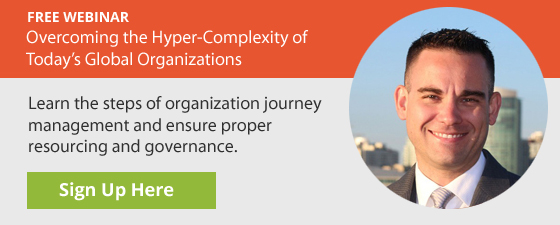There are many interesting parallels between leadership in the military and corporate America. While not everything that works for the military is suited to corporate change management, there are certain military ideas and practices that, when adapted to corporate use, can strengthen and enhance a company’s strategic planning and execution. One military practice that is very well suited to this purpose is contingency mapping.
In a military operation, contingencies can come up in any area from logistics, to human resources, all the way to enemy behavior: Might there be an ambush along the way? Will they try to disrupt our logistics lines of support? Are their anti-aircraft guns going to be operational? Part of the planning of an operation is to think ahead about everything that could possibly happen that could affect the desired outcome. That way, steps can be taken proactively to minimize chances of failure at every stage.
It’s the same concept in a corporate setting, although we’re dealing with competitors rather than enemies. Let’s take a look at how this process works, and how to apply it to organization change management.
Exercising Preparedness
In my military career, I learned to use a deliberate process to help think about and prepare for contingencies prior to embarking upon an operation. It is a fun and unique exercise that I have found translates very well to corporate America.
As we map out an organization’s journey management, we pick key spots throughout the process that we know are the most critical. For each of those spots, we engage in a role play and/or discussion about how these events are going to unfold. We walk through these scenarios and contingencies in a very deliberate way, using a specific formula:
Action-Reaction-Counteraction
This is how it goes:
- Action: The exercise always starts with the leader of the organization/process presenting his or her plan of action: “At this time and place, these are the actions I’m going to do.”
- Reaction: Next, a person who has been pre-designated to take on the role of an outside entity acts as a disruptor. This person’s job is to think like the competition or whatever entities (employees, mechanical systems, market or weather events, etc.) are likely to disrupt the leader’s action, and describe how they see events playing out. For instance: “I’m the competitor watching this marketing campaign, this is how I perceive it will affect the market, and this is what I’m doing to do in response,” or “As an employee, I don’t agree with this management decision, and this is what I’m going to do to try to show the company it’s the wrong decision.”
- Counteraction: Finally, the role play always goes back to the originator of the action. Based on what the competitor or other entity just did, the leader then comes up with an appropriate contingency response: “If and when that happens, this is what we will do.”
Paving the Way for Success
Whether it’s a new marketing campaign or implementing change management through an organization design, any time an organization is getting ready to initiate a critical event, there will always be two, three, or more critical areas where disruption is likely to happen. Using this three-step contingency mapping process to prepare for these scenarios in advance significantly improves chances of success. In addition, we have found that engaging in this exercise consistently helps leaders develop more agile thought processes, generate more proactive lines of thought, and build more resiliency into their organizations.

